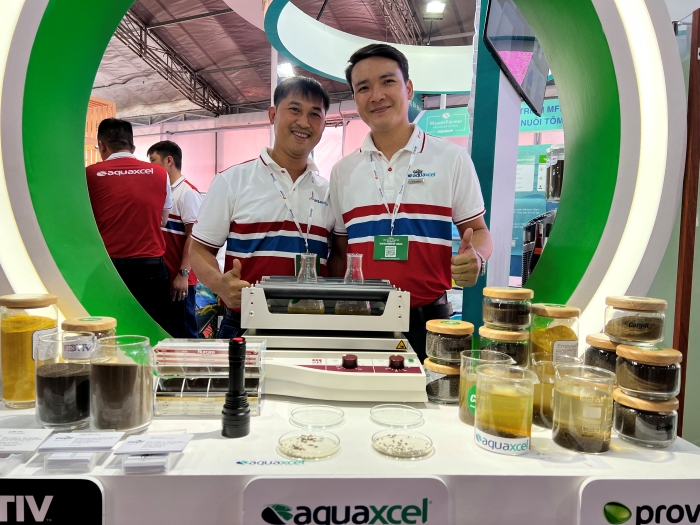Cargill, one of the leading animal feed producers in the U.S., has withdrawn from the aquafeed business in Vietnam, said Maxime Hilbert, interim general manager for aqua nutrition at Cargill Thailand & Vietnam.
The exit is part of Cargill’s efforts to direct resources toward the markets and species with the strongest long-term growth potential, Hilbert was quoted by Vietnam Livestock magazine as saying.
“The U.S. giant is actively exploring potential next steps for the aquafeed business in Vietnam, including the related assets.”
Following its decision, Cargill will close two aquafeed plants in the southern provinces of Dong Thap and Long An, as well as the aqua technical application center (TAC) in the neighbouring province of Tien Giang.
This move does not impact Cargill’s broader animal nutrition and health business in Vietnam, the executive stressed, noting that the country remains an important market for the corporation.
Last December, Cargill announced a 5% global workforce cut as part of a long-term strategy. Cargill had invested around USD160 million in Vietnam, operating 12 feed mills for livestock and aquaculture with a combined annual capacity of 1.6 million tonnes.
S&P Global noted that Cargill’s aquafeed business in Vietnam had underperformed over the past two years, citing intense market competition.
Cargill entered Vietnam in February 1995 and employed over 1,500 staff. Its operations in the country spanned animal nutrition and health, food and beverage ingredients, farm produce, feed ingredients, and food products.
Global Strategy Shift
Cargill’s exit from aquafeed in Vietnam comes in the wake of its global restructuring effort announced in December 2024, which included a 5% reduction in its global workforce. The company cited strategic realignment as the reason behind the cuts.
The competitive nature of Vietnam’s aquafeed industry has posed challenges for Cargill in recent years. S&P Global reported that the company’s aquafeed operations in the country underperformed over the past two years, despite rapid industry growth.
According to the General Statistics Office of Vietnam, aquafeed output in the first five months of 2025 rose 7.8% year-on-year to 3.64 million tonnes. Meanwhile, Vietnam’s overall aquaculture production grew from 53.6% of total seafood output in 2018 to 60% in 2024, showing a clear upward trend.
Dominance amid declining revenues
Despite a 10% revenue drop from USD177 billion to USD160 billion in fiscal year 2024, Cargill maintained its position at the top of Forbes’ list of largest private companies. The company continues to vastly out-earn household names such as SpaceX ($8.7 billion) and Valve ($5 billion).
According to the General Statistics Office of Vietnam, aquafeed output in the first five months of 2025 rose 7.8% year-on-year to 3.64 million tonnes. Meanwhile, Vietnam’s overall aquaculture production grew from 53.6% of total seafood output in 2018 to 60% in 2024, showing a clear upward trend.
According to data from Vietdata, Cargill Vietnam’s revenue consistently increased from 2020 to 2022. Revenue grew from over VND 17 trillion in 2020 to nearly VND 28.5 trillion in 2022—up 56% in 2021 and an additional 7% in 2022.
However, profit after tax fluctuated during this period. Cargill Vietnam posted net profit of nearly VND 940 billion in 2020, which rose 15% to nearly VND 1,100 billion in 2021 before declining 18% to around VND 890 billion in 2022.

A Crowded, Competitive Sector
Vietnam’s aquafeed market is highly competitive, with major players including C.P. (Thailand), Grobest (Taiwan), Japfa (Indonesia), BioMar (Vietnam-Australia), Sunjin and CJ (South Korea), Uni-President (Taiwan), YueHai (China), and local-foreign joint ventures like Thăng Long Group (Vietnam-China).
Domestic players such as Sao Mai Group (HoSE: ASM), Mavin, and Greenfeed are also active in the space. The market has seen significant recent investment: in May 2024, Thăng Long Group inaugurated a new plant in Hải Dương, boosting annual capacity to 700,000 tonnes; YueHai broke ground on a new factory in Vĩnh Long in April 2024, with an expected annual output of 200,000 tonnes.
Before Cargill’s exit, Chinese aquafeed firm Tong Wei had already scaled back operations, reducing the capacity of its Tien Giang plant from 300,000 tonnes to 220,000 tons back in 2015.
Cargill’s withdrawal marks a significant reshaping of Vietnam’s aquafeed industry — one of Southeast Asia’s most dynamic sectors — and raises questions about the future strategies of foreign players in the region.




